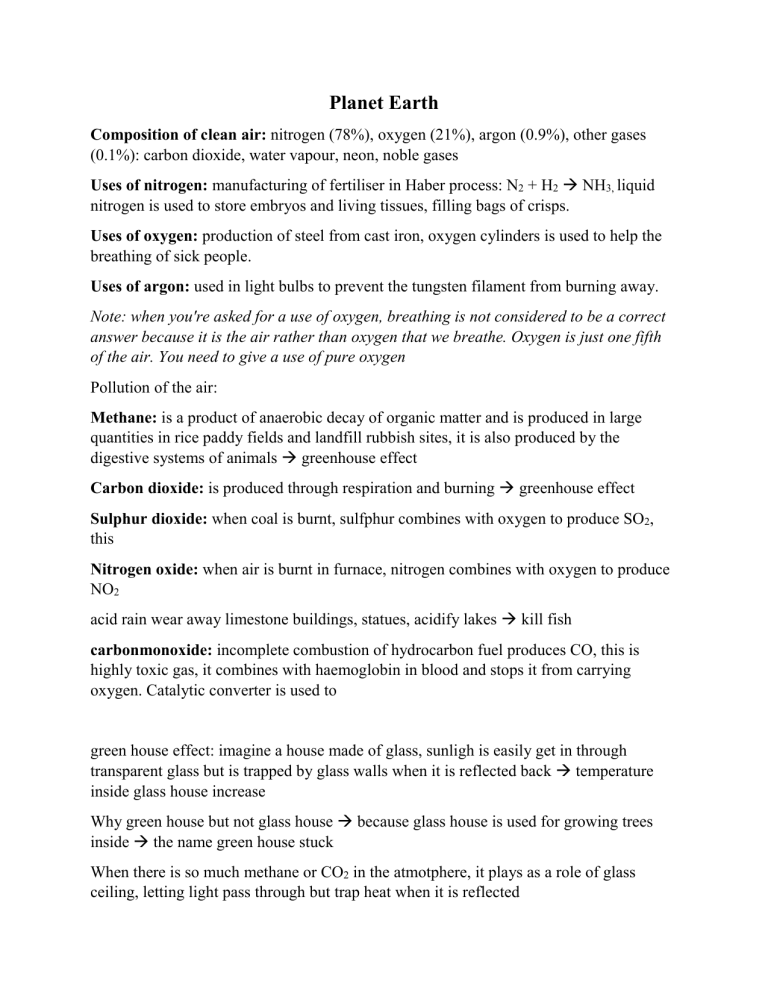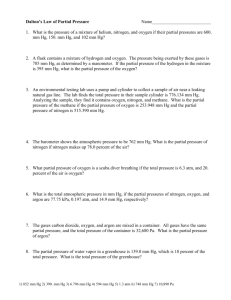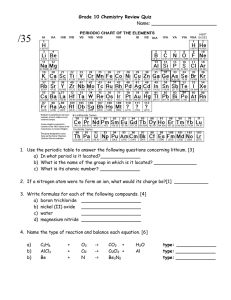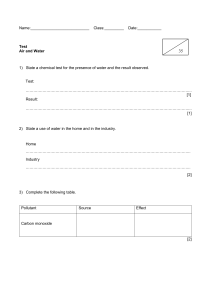
Planet Earth Composition of clean air: nitrogen (78%), oxygen (21%), argon (0.9%), other gases (0.1%): carbon dioxide, water vapour, neon, noble gases Uses of nitrogen: manufacturing of fertiliser in Haber process: N2 + H2 NH3, liquid nitrogen is used to store embryos and living tissues, filling bags of crisps. Uses of oxygen: production of steel from cast iron, oxygen cylinders is used to help the breathing of sick people. Uses of argon: used in light bulbs to prevent the tungsten filament from burning away. Note: when you're asked for a use of oxygen, breathing is not considered to be a correct answer because it is the air rather than oxygen that we breathe. Oxygen is just one fifth of the air. You need to give a use of pure oxygen Pollution of the air: Methane: is a product of anaerobic decay of organic matter and is produced in large quantities in rice paddy fields and landfill rubbish sites, it is also produced by the digestive systems of animals greenhouse effect Carbon dioxide: is produced through respiration and burning greenhouse effect Sulphur dioxide: when coal is burnt, sulfphur combines with oxygen to produce SO2, this Nitrogen oxide: when air is burnt in furnace, nitrogen combines with oxygen to produce NO2 acid rain wear away limestone buildings, statues, acidify lakes kill fish carbonmonoxide: incomplete combustion of hydrocarbon fuel produces CO, this is highly toxic gas, it combines with haemoglobin in blood and stops it from carrying oxygen. Catalytic converter is used to green house effect: imagine a house made of glass, sunligh is easily get in through transparent glass but is trapped by glass walls when it is reflected back temperature inside glass house increase Why green house but not glass house because glass house is used for growing trees inside the name green house stuck When there is so much methane or CO2 in the atmotphere, it plays as a role of glass ceiling, letting light pass through but trap heat when it is reflected greenhouse effect global warming (enhanced greenhouse effect) climate change glaciers and polar ice will melt sea level rises surface temperature of the Earth will increase Water treament: removing solid particles and adding chlorine to remove bacteria from water in rivers and lakes and underground water. The nature of matter Matter exists in 3 states: - solid: has a fixed volume, high density, e.g. metal bar - liquid: has a fixed volume, medium density, e.g. water - gas: its volume is also container's volume, low density, e.g. oxygen Kinetic theory of matter Changes of state: - melting: changes from solid liquid, e.g. when ice is taken from refrigerator, it melts to liquid - freezing: changes from liquid solid, e.g. when water is put inside freezer, it is frozen to ice - evaporation: changes from liquid gas, e.g. - condensation: - sublimation: direct changes from solid gas or gas solid, e.g. volatile liquid: evaporate easily and has a low boiling point pure substance: e.g. distilled water (contain H2O) impure substance, e.g. mineral water (contain H2O, other mineral, Ca, K, ..) impurity makes a substance harder to melt higher melting point harder to freeze lower freezing point Diffusion Brownian motion Elements and compounds Atom, molecule, element, compound, mixture Seperating solid/liquid mixture: filtration, centrifuging, decanting, evaporation, crystallation, distillation Seperating liquid/liquid mixture: seperating funnel, fractional distillation Seperating solid/solid mixture: chromatography Chemical reactions Acids, bases and salts Quantitative chemistry Ar: relative atomic mass (refer to periodic table of elements) Mg = 24 1 mol Mg weighs 24g Mr: relative molecular mass NaCl = 23 + 35 = 58 1 mol NaCl weighs 58g 1 mole of gas occupies 24dm3(l) at room temperature pressure (rtp) Concentration of solution = mole/volume Empirical formula: simplest ratio of atoms (C2H4 CH2) Percentage yield = (actual yield/theoretical yield) x 100% Percentage purity = (mass of pure substance/mass of impure substance) x 100% How far? How fast Patterns and properties of metals Industrial inorganic chemistry Organic chemistry Petrochemicals and polymers Chemical analysis and investigation



